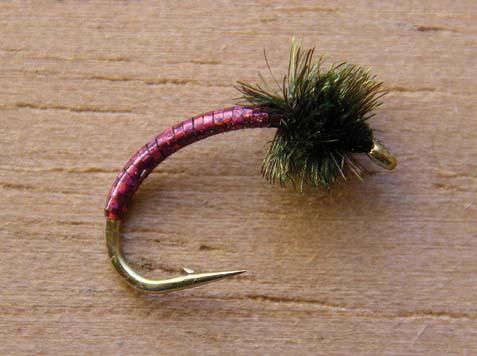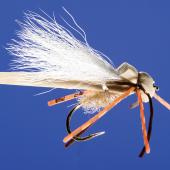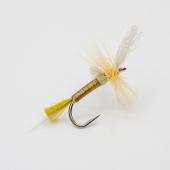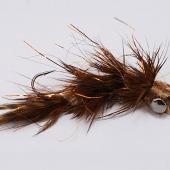The Disco Midge
I can’t think of a more productive winter fly than this version of the Disco Midge. A good friend of mine from Victor, Idaho turned me on to it years ago, and countless good fish have fallen victim to its small, innocuous imitation. I have a lot of fond memories of icy cold days, numb hands and feet, and some oversized wintertime trout.
The Disco Midge is essentially a midge larvae or pupae imitation. Midges are active all year but become really important to the trout and the angler during the winter. Unlike most other aquatic insects, midges hatch throughout the winter, even on the coldest days, creating a banquet. To the surprise of many anglers, large trout pay close attention to these tiny insects that often hatch by the millions on any given day in winter.
Midges live in about every type of water that Montana has to offer. However, they really thrive on tail-water rivers and spring creeks. The slightly warmer water temperatures make for more active bugs and trout. Their numbers on rivers like the Bighorn, Missouri, and Madison, and spring creeks like Armstrong’s, Nelson’s, and Depuy’s, are nothing short of astonishing. A softball-sized rock on these waters may have hundreds of midge larvae clinging to the sides. Midges are a rich source of food, and trout can get silly big eating these little protein bars.
I like to fish the Disco Midge two at a time and under a strike indicator with a splitshot sized to the depth of the water. Often, I fish this fly below a larger fly like a scud or a sowbug. The takes on small flies like this one can be quite subtle, especially in the winter when water temperatures can make the fish a little lethargic. Your indicator may just hesitate or slow down, so don’t be afraid to set the hook! There are no such things as rocks when you are nymph fishing, you must assume that any movement of your indicator is a fish. Spend a few minutes tying a couple of these easy flies before heading out this winter. A big trout might make you a believer in this little red wonder.
Materials
Hook: Tiemco 2487 #12-22, or equivalent
Thread: UTC 70 Black
Body: Red or Fuchsia Holographic flashabou (Other flash colors can work well too; try black, pearl, root beer, blue, etc.)
Thorax: Peacock herl
Instructions
1. Attach your thread to the hook shank and wind it all the way back to above the barb on the hook shank.
2. Tie in a strand of flashabou and bring your thread back toward the eye of the hook.
3. Next, wind the flashabou up the shank. It pays to coat the flashabou body with some head cement, or even better some five-minute epoxy for durability. Otherwise, this fly might be a one-fish fly.
4. Tie in a strand of peacock herl back from the eye of the hook a short distance.
5. Wind a few turns of herl, creating a small thorax. I like to wind my thread though the herl a few times. This also adds to the durability of this fly.
6. Whip finish and you’re done!
Doug McKnight is a fly tying and fishing fanatic; he manages George Anderson's Yellowstone Angler in Livingston and is a fly designer for Umpqua Feather Merchants.












